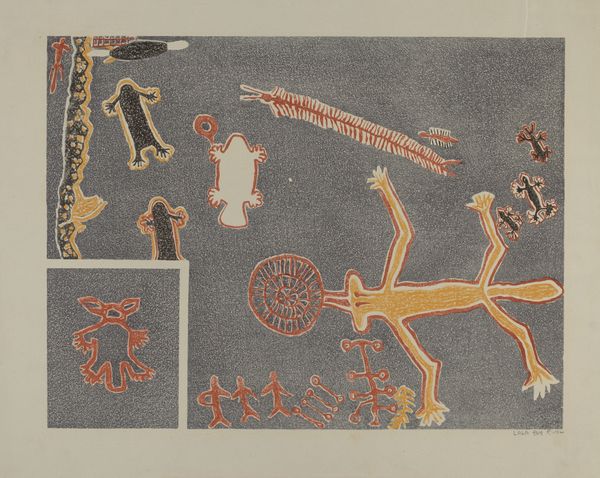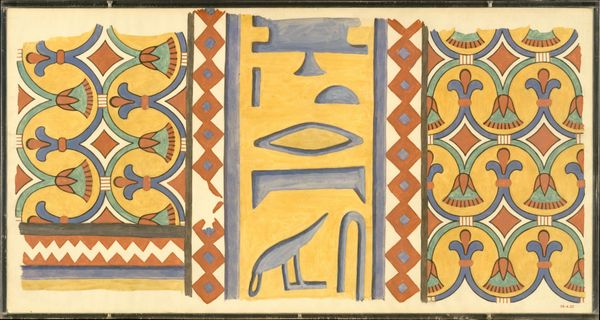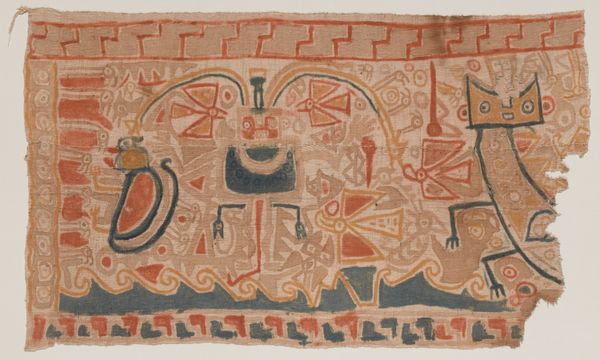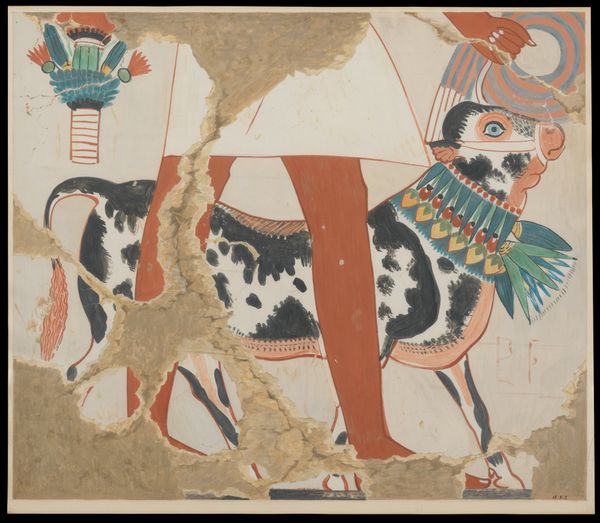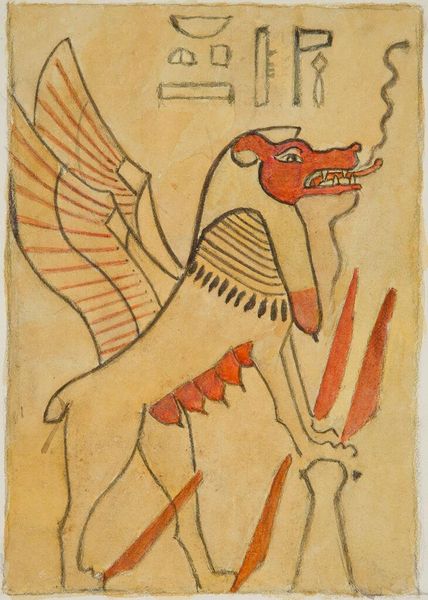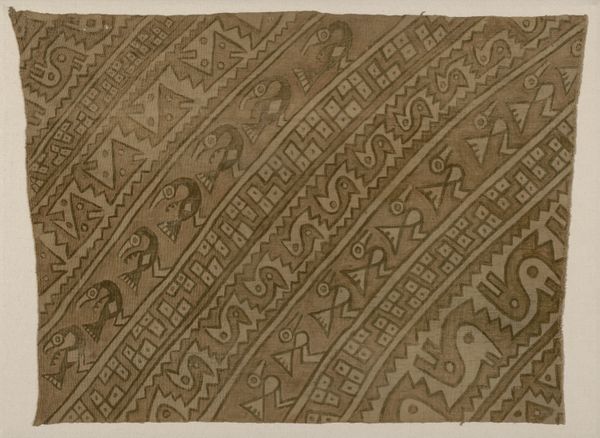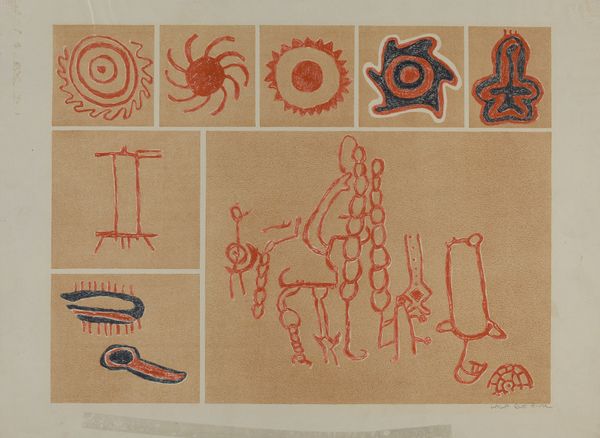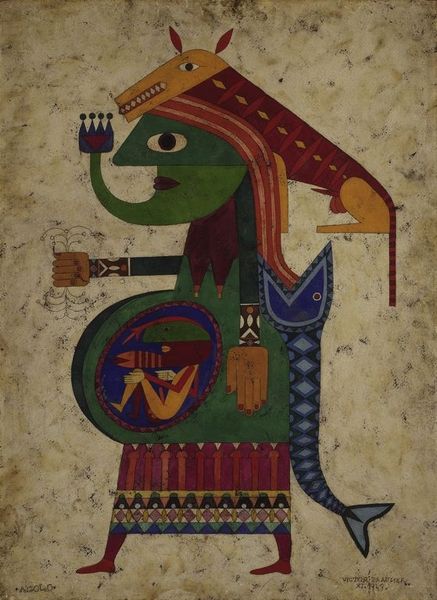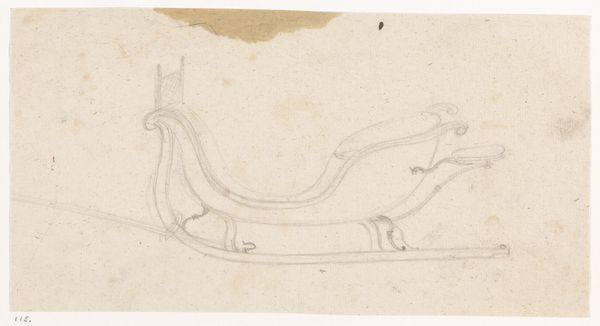
drawing, coloured-pencil, ink
#
drawing
#
coloured-pencil
#
water colours
#
ancient-egyptian-art
#
figuration
#
form
#
ink
#
egypt
#
coloured pencil
#
ancient-mediterranean
#
line
#
wall painting
#
watercolour illustration
#
history-painting
Dimensions: facsimile: h. 26.5 cm (10 7/16 in); w. 45.3 cm (17 13/16 in); 1:1 scale; framed: h. 26.7 cm (10 1/2 in); w. 36.2 cm (14 1/4 in)
Copyright: Public Domain
Editor: Here we have a coloured pencil and ink drawing from around 2140 BC. It’s titled "Detail of a Griffin, Tomb of Khety," and was created by Nina de Garis Davies. It has such an interesting illustrative quality. What stands out to you about it? Curator: Immediately, I’m drawn to the labor involved. Consider the pigments, the gathering and grinding, the crafting of the brushes themselves. This wasn’t just an image; it was an investment of significant resources and time. And how does the materiality of the tomb itself—the stone, the environment—affect the longevity and legibility of the work? Editor: That's fascinating! I hadn't thought about the actual process of creating the colors. How does that influence how we see the work today? Curator: It forces us to consider the socio-economic implications. Who commissioned this? Who benefitted from this labor? Was the artist a craftsperson, highly valued, or simply another worker? Even the griffin itself—is it simply decoration, or does its materiality—being *placed* there through labour--imbue it with a power linked to production? Editor: So, it's not just about what the griffin *represents* symbolically, but how it was physically brought into existence within this tomb, right? Curator: Precisely. The *means* of production informs the *meaning* itself. Think about the difference if this was hastily scratched into the wall versus meticulously painted. What different readings emerge? Editor: I see. It shifts the focus from just artistic intention to the social context of its making. I'll definitely look at art differently now. Curator: Excellent. Looking at the 'how' and 'why' something was made reveals layers of history often overlooked.
Comments
No comments
Be the first to comment and join the conversation on the ultimate creative platform.
